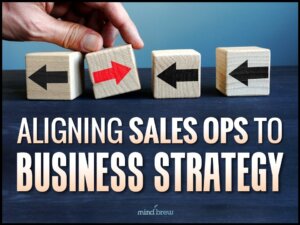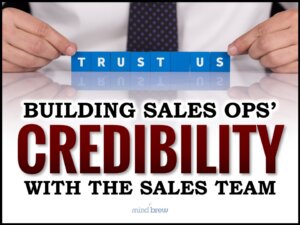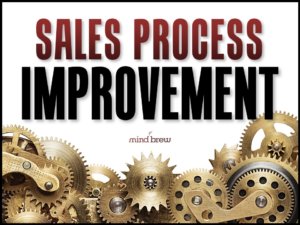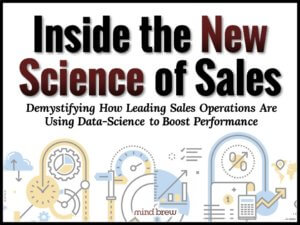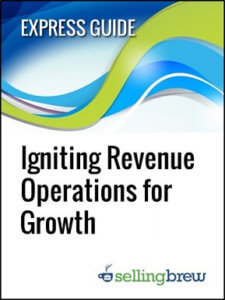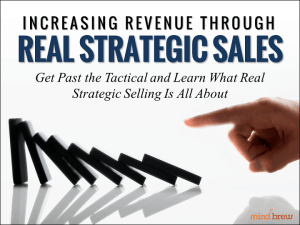If you took a glance at my bookshelf, you would see that my favorite economist is Thomas Sowell. And yes, I’m fully aware of just how dorky and geeky it is to actually have a favorite economist.
Now, Sowell isn’t one of those buzzword-of-the-day economic commentators you see in the media all of the time, telling you just what you want to hear. Nor is he one of those boring academics who can put you to sleep introducing themselves. In sharp contrast, Thomas Sowell has always been a charming and relatable “straight shooter,” best known for his brutally honest…and at times, sarcastically humorous…assessments of various economic systems.
And when it comes to driving improvement in a typical sales operation, one of Thomas Sowell’s quotes really resonates with me:

Admittedly, I talk a lot about “solutions” myself. We all do. It’s just the language of our profession; the jargon of our trade. That said, we should recognize that the word “solution” does imply a level of finality and perfection that rarely, if ever, exists in real-world business environments.
After all, a sales operation isn’t a simple jigsaw puzzle where you just find the missing piece, plug it in, and everything works out perfectly. No, what actually happens with improvement efforts in an interconnected commercial environment is more akin to whack-a-mole—i.e. you address one issue and then other issues pop up as a consequence or result.
Let’s say, for example, that your company is struggling with margin erosion on key products due to material cost inflation. Of course, a common “solution” might be to implement a price increase on these items to cover the costs. Easy peasy, right? But then, within just a couple of weeks, the sales team starts reporting pushback from key customers and you’re suddenly losing wallet-share in strategic accounts.
As it happens, this so-called “solution” has its own set of follow-on costs and consequences. It’s not that the price increase was a failure. It may still have been the right move, given the circumstances and your broader objectives. But thinking of it as a “solution” oversimplifies what’s actually happening. What’s actually happening is that you got higher margins, but at the cost of some volume and customer satisfaction. In other words, you made a tradeoff.
Or as another example, let’s say you want to drive more growth in strategic product lines. Your solution is to create quotas specifically tied to the strategic categories, giving bonuses for meeting those targets. The expectation is that these changes will incentivize salespeople to focus more effort on the strategic products.
But even as the new quotas are being met, you see that salespeople are neglecting other, steady-performing products in favor of hitting the strategic product targets.
The so-called “solution” you implemented successfully increased sales of your strategic products, but at the cost of decreased focus on other lines and potential damage to customer relationships. So, was it really a solution? Or was it just a way to prioritize some product lines over others? Here again, you’ve made a tradeoff.
That’s why I like Sowell’s quote so much. It’s a simple and blunt reminder that addressing one issue often means creating or exacerbating another. And it also reminds us that there are no magical “fixes” and that everything is just a reshuffling of priorities or a rebalancing of consequences.
In sales operations, we have to approach improvement with our eyes wide open. If we’re expecting to find some missing puzzle pieces that we can just plug in and make everything picture-perfect, we’re setting ourselves…and everyone else….up for a lot of frustration and even failure. The sooner we accept that true sales “solutions” are mostly an illusion, the sooner we can focus on what really matters: making better tradeoffs.
In the end, this approach allows us to be more proactive about anticipating the downstream effects and having contingency plans in place. It’s not defeatist or pessimistic. It’s just the mindset of a realist who understands how things really work in a typical commercial environment.
So…the next time someone looks to you for a sales “solution,” you might want to channel a little Thomas Sowell. There are no solutions, only tradeoffs. The most effective Sales Ops professionals don’t actually deliver miracle cures. Instead, they provide thoughtful and deliberate management of the tradeoffs to best achieve the objectives.
And in an increasingly complex and interconnected commercial environment, that’s about as close to a “solution” as you’re ever going to get.

